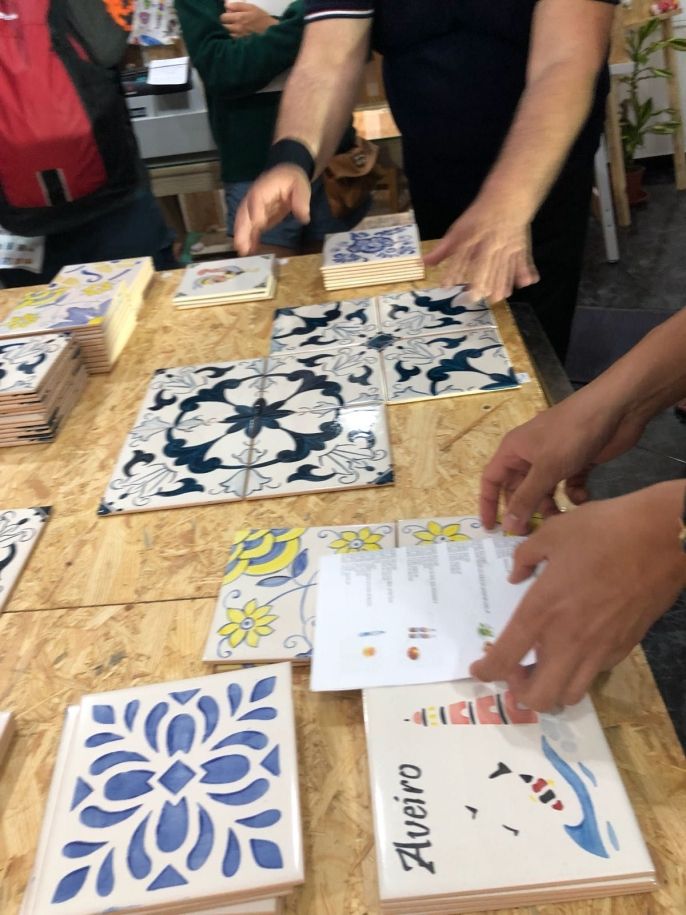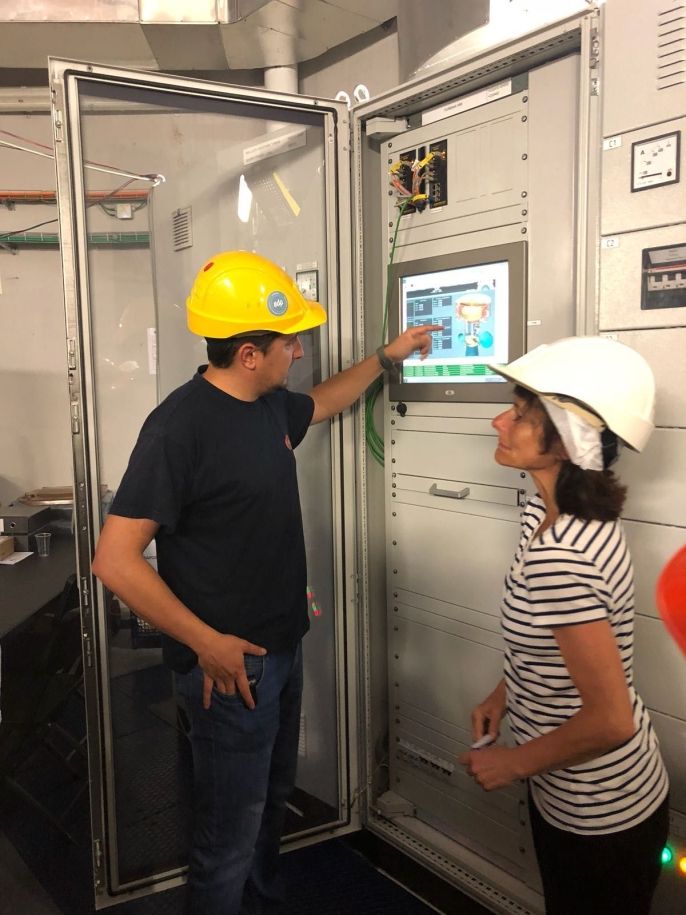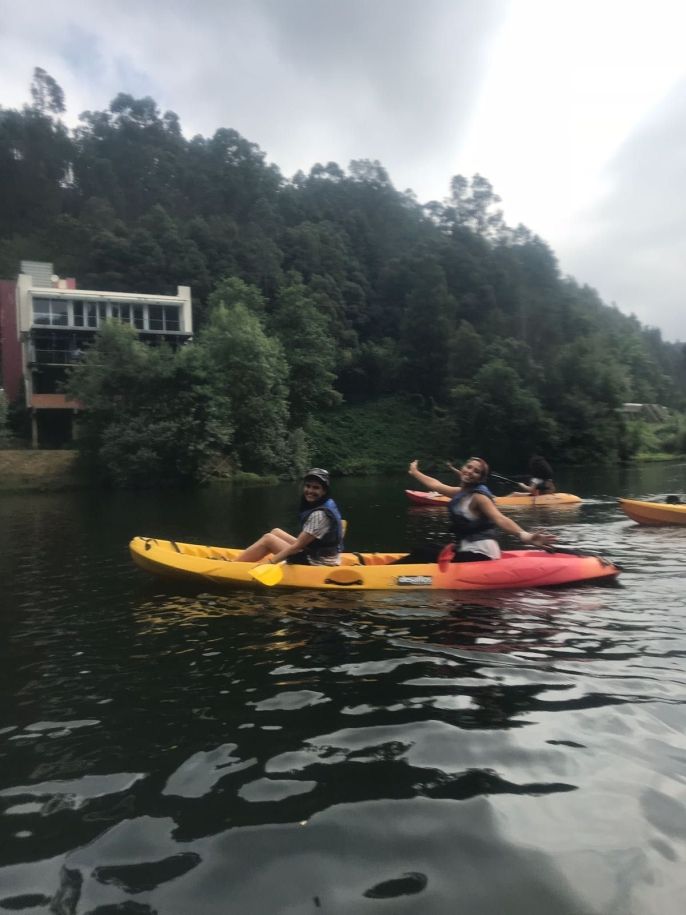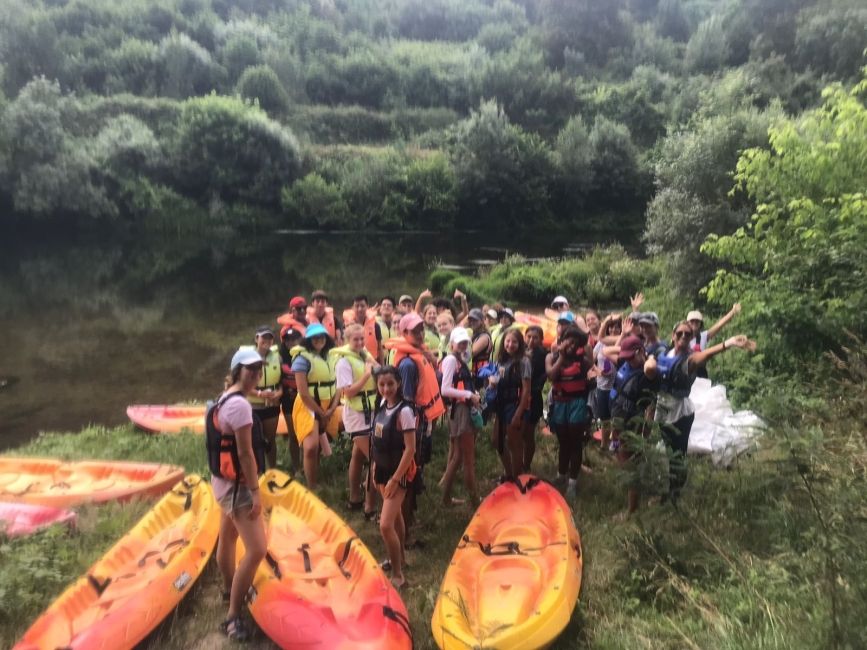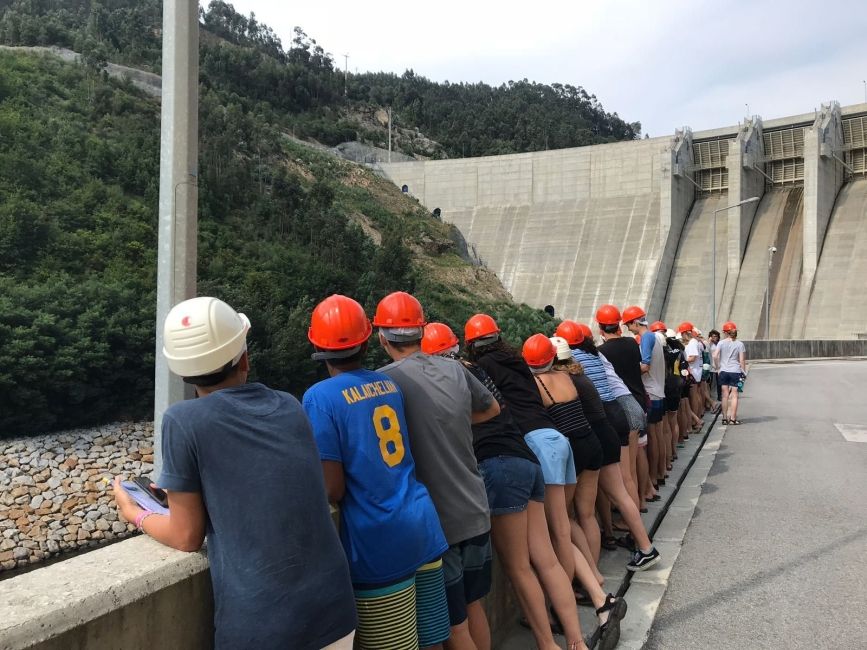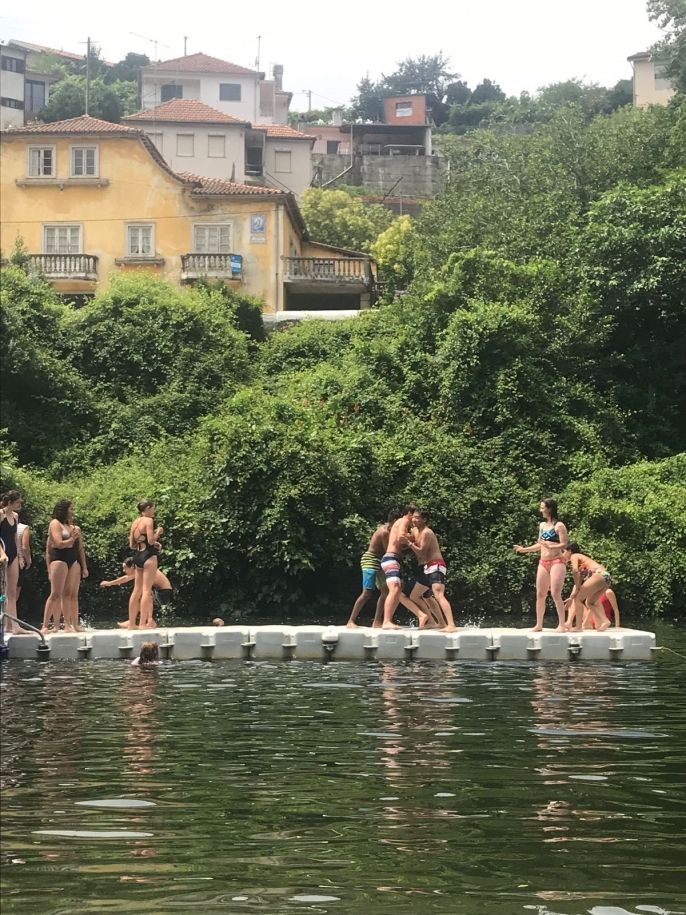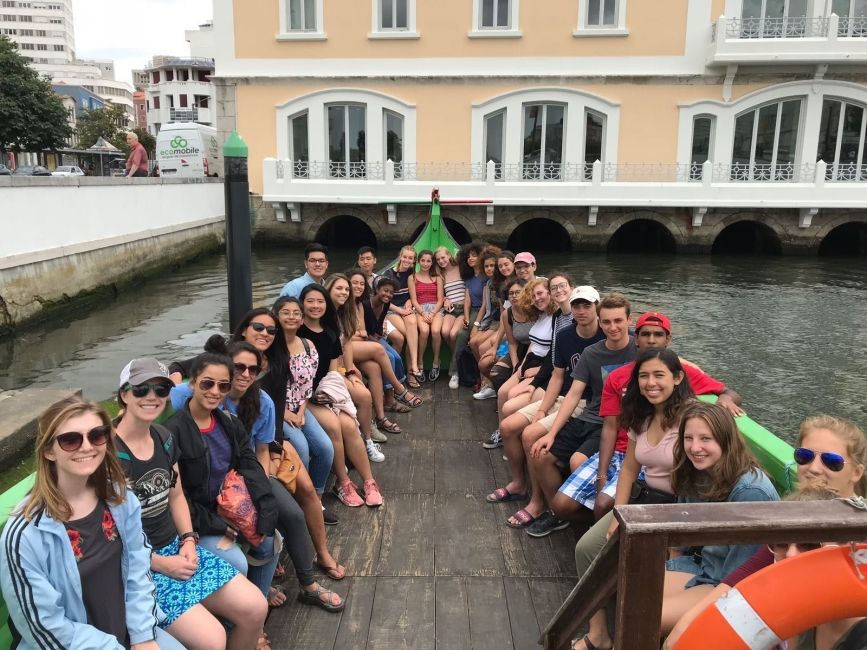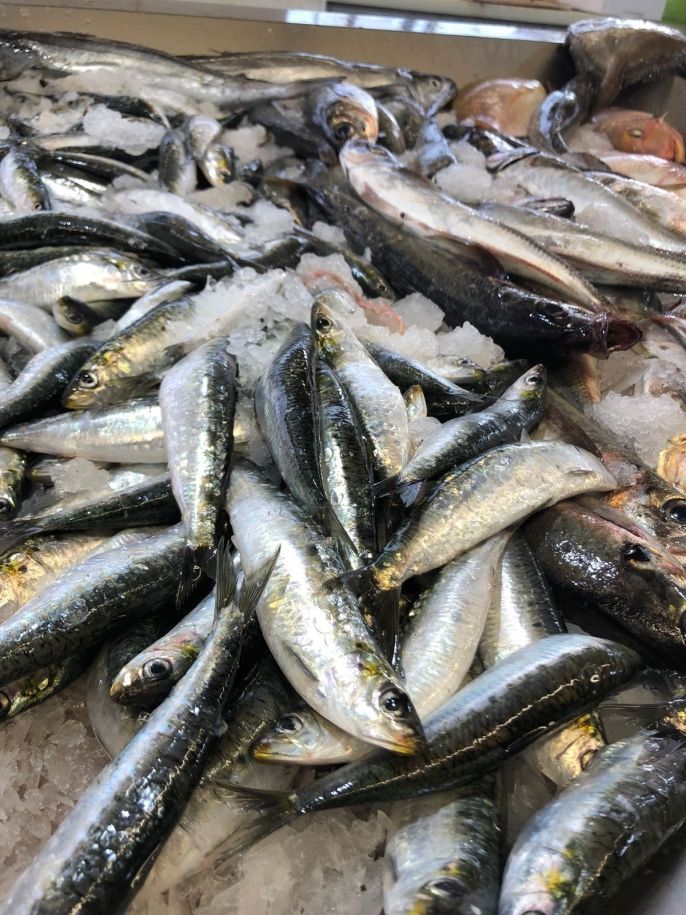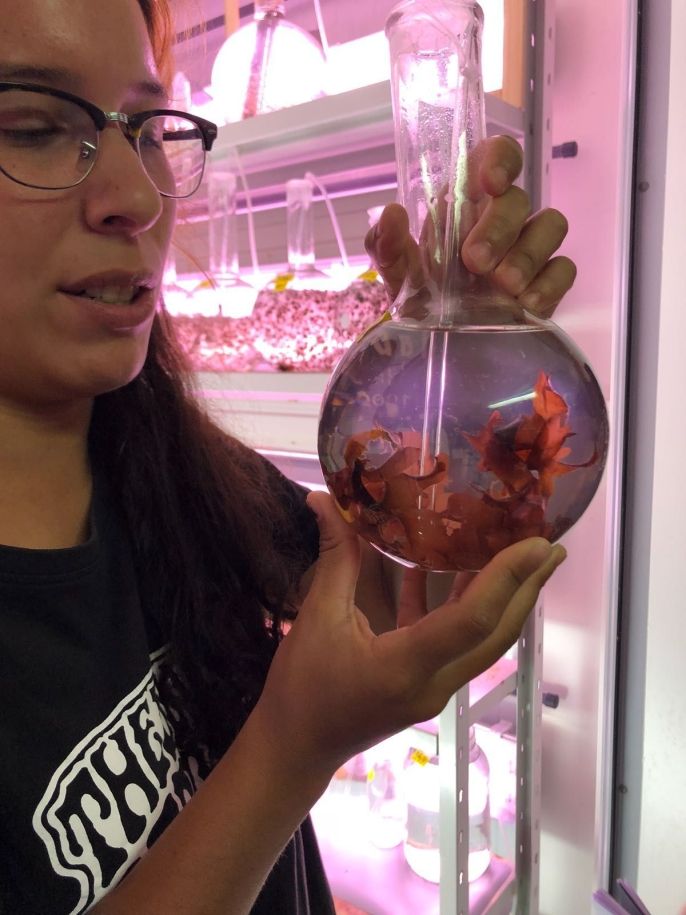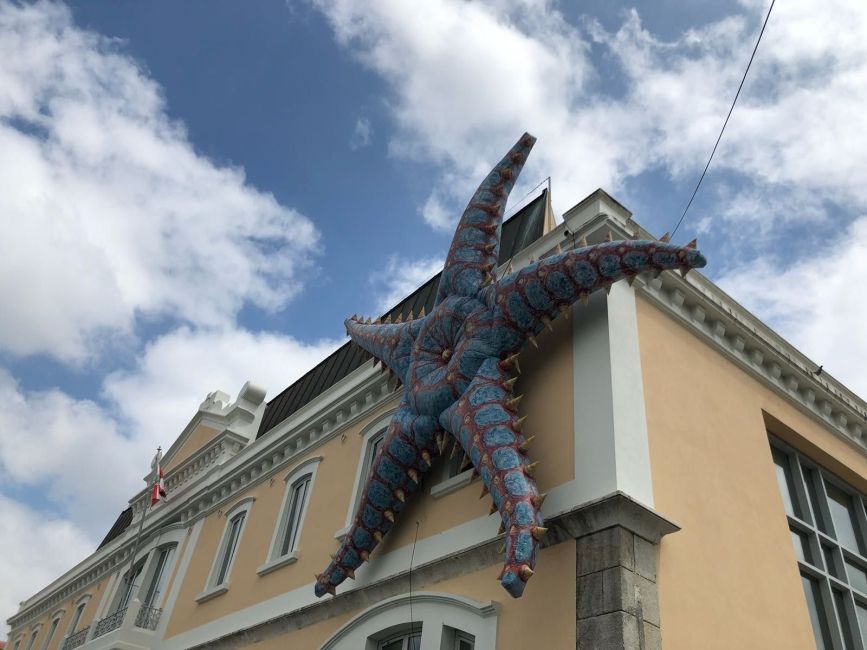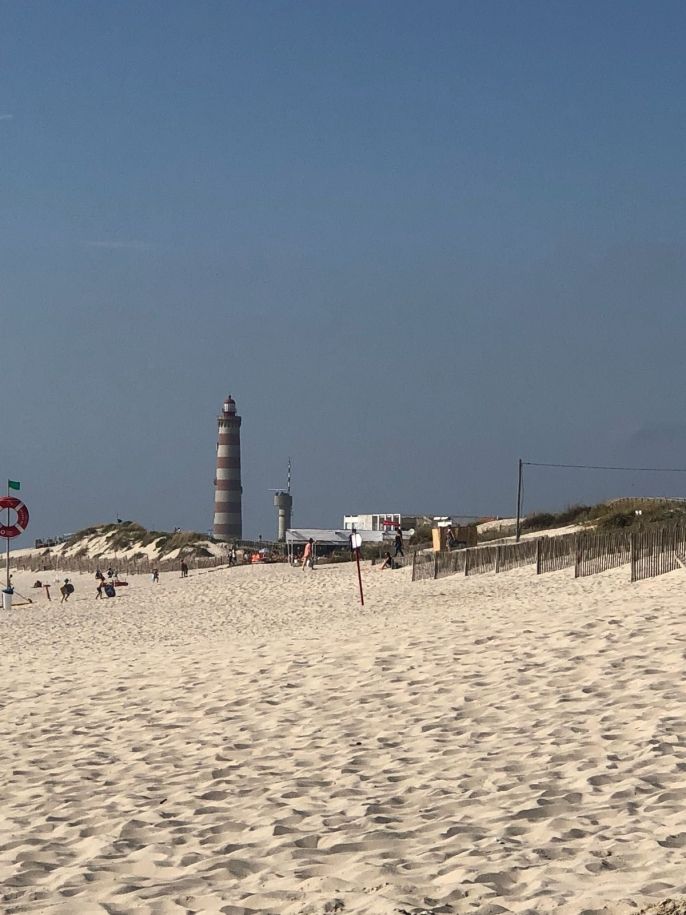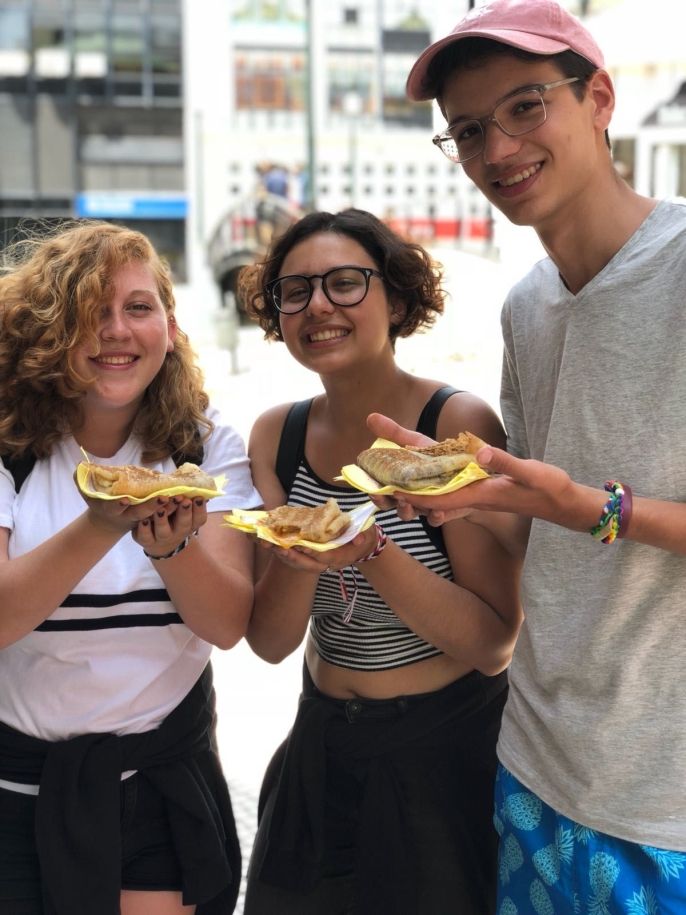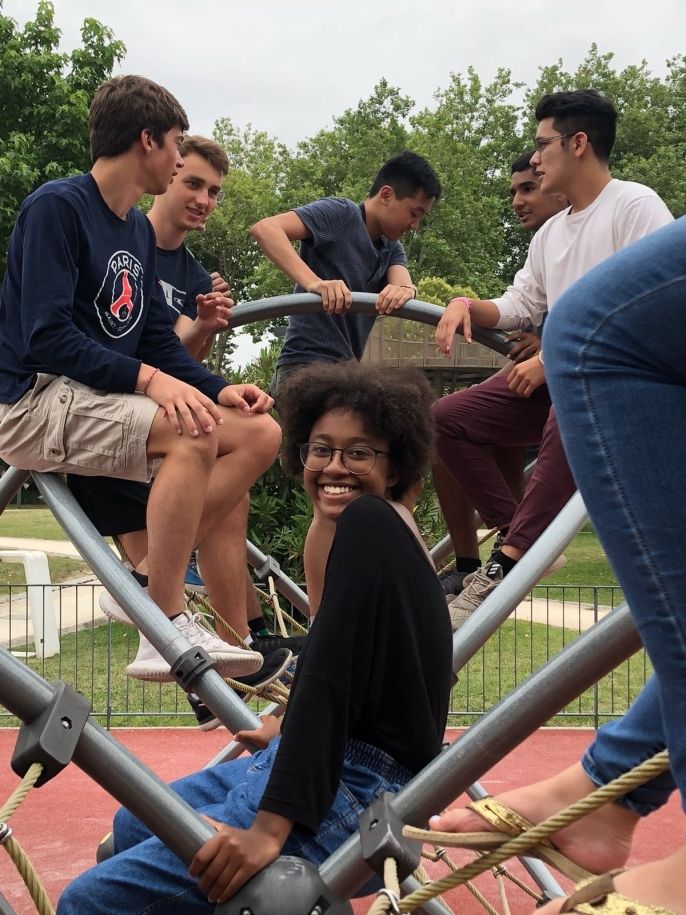The Enchantment of Aveiro
On Wednesday morning we jumped aboard our trusty bus, travelling to the northern city of Aveiro, an important outpost of historical and ecological significance. Called "The Venice of Portugal," Aveiro boasts a canal that runs through the city in three directions and is trolled by traditional Portuguese algae collecting boats, Meceiros.
Our city tour started with cameo appearances from our Lisbon based Survival Portguese Teachers who led us down brightly decorated back alleys to where an artist waited for us...
The artist´s eyes slid from student to student, twinkling with the delight of someone sharing their long cultivated craft. The glossy tiles around us portrayed scenes of fishermen, children at play, biblical characters, or intricate patterns that connected together like a cultural jigsaw. "Hand painted tiles will last longer than their owners," he intoned knowingly. The "azulejo" or tile artist rearranged the blue painted ceramic squares in front of us. "King Fernardo of Portugal knew that the construction workers of the ancient past did not take the time to carefully arrange the tiles into their proper design so he decreed a rule (that is still in use today): Every tile should be able to create at least two different patterns with its neighboring tile. This fact gave us a fresh perspective on the already impressive looking tiled house facades we strolled past during our second Portuguese language class.
Then it was off to the market to bargain for fruit. "Quanto custa este senhora?" We bought peaches, apples, and mandarins to nibble on our walk and supplemented our snacks with gigantic waffle cones pressed flat into triangles and called "American Cookies" on the kiosk sign.
Afterwards we toured the city´s largest museum, learning about the local fishing traditions of Aveiro and the cycle of sustainability in cod or "bacalhau" harvesting.
Thursday morning we bussed to the river put in for our morning spent on the River Vouga. Two to a boat, we paddled through friendly rapids and lush riverine ecosystems. The verdant hills whispered their problems on the breeze though; eucaliptus was taking over. Planted decades ago for its ability to grow quickly and serve as prima material for paper, eucaliptus could be spotted on every hillside and shore, turning the ground around it acidic and preventing native plants from sprouting roots. By the end of the kayak trip and accompanying field class, students could successfully identify wild carrot and had even tried foraged fennel. "It tastes like black licorice," said Lora to a chorus of agreement.
Next we bussed to the Ribeiradio dam and reservoir. Donning hard hats we journeyed to what felt like the center of the earth to look up close at turbines used to generate electricity. While in the company of the kind engineer, we talked about the benefits of the hydroelectric monolith. Back on the bus with our Portuguese leader, Patricia, we discussed the environmental ramifications of cutting a river in two parts and disrupting its flow. Students brought up great points about the conflict of human survival vs. environmental sustainability.
We rounded out our tour of Aveiro with an excursion to an outdoor lab where young scientists are changing the shape (literally and litorally) of marine life. Students sampled a variety of seaweed, including one called "old lady's hair," before heading to the beach for some chill out time under the sun.
Obrigada por ler! Thanks for reading!
Related Posts
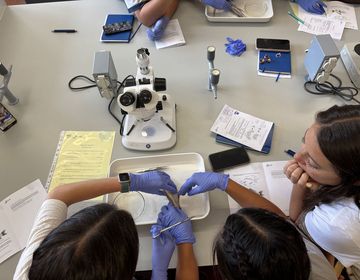
A Summer of Science, Service, and Self-Discovery in Lisbon
The following blog was written by Matt Redman , Vice President of High School Programs at CIEE, who has been with the organization since 2009. This summer, I had the... keep reading
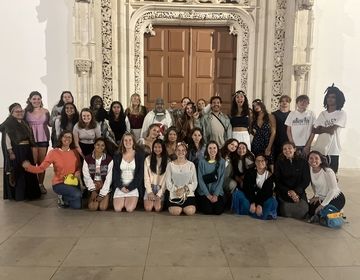
Our last days
It is hard to describe what these last few days have felt like for our student. In one sense it feels like we have been here forever— our group is... keep reading
